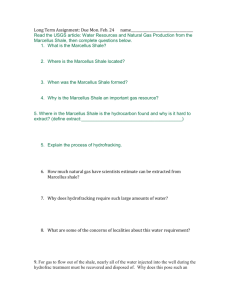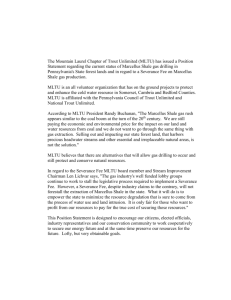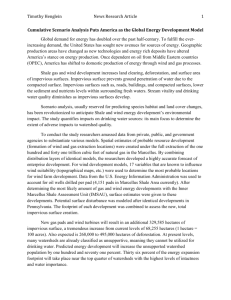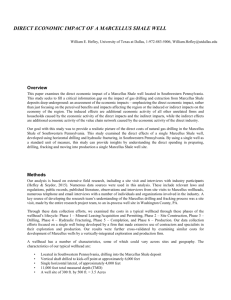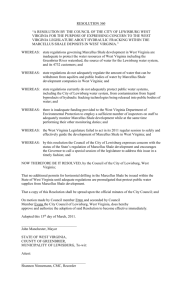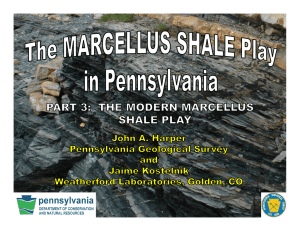Chemostratigraphy of the Marcellus Shale: Insights into depositional
advertisement
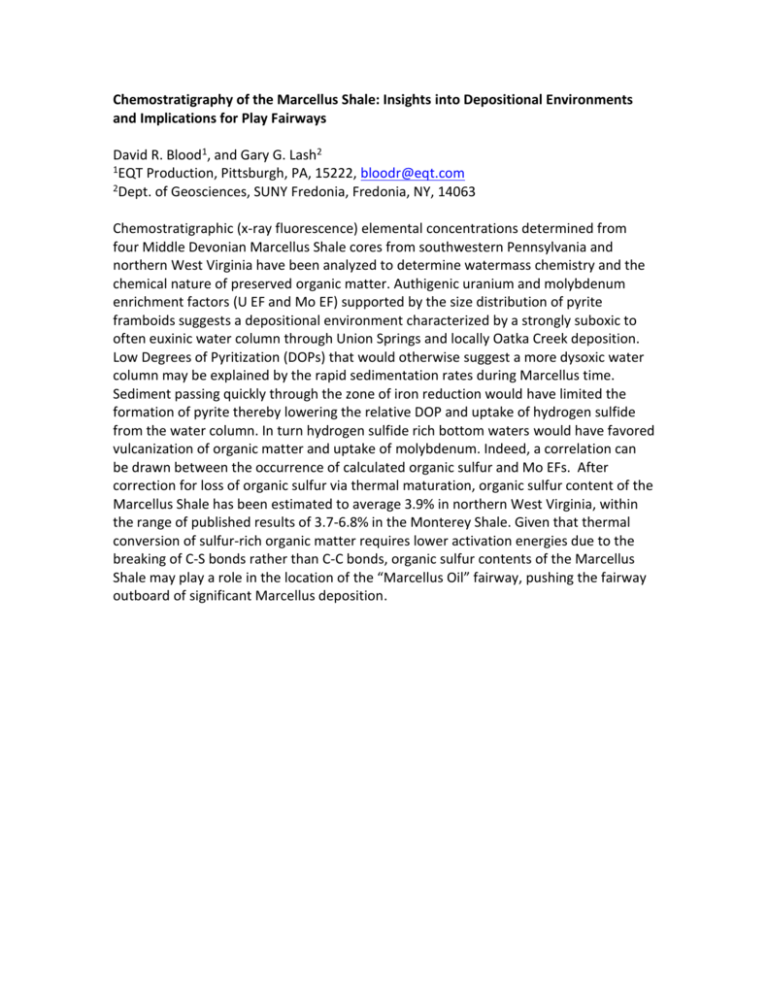
Chemostratigraphy of the Marcellus Shale: Insights into Depositional Environments and Implications for Play Fairways David R. Blood1, and Gary G. Lash2 1EQT Production, Pittsburgh, PA, 15222, bloodr@eqt.com 2Dept. of Geosciences, SUNY Fredonia, Fredonia, NY, 14063 Chemostratigraphic (x-ray fluorescence) elemental concentrations determined from four Middle Devonian Marcellus Shale cores from southwestern Pennsylvania and northern West Virginia have been analyzed to determine watermass chemistry and the chemical nature of preserved organic matter. Authigenic uranium and molybdenum enrichment factors (U EF and Mo EF) supported by the size distribution of pyrite framboids suggests a depositional environment characterized by a strongly suboxic to often euxinic water column through Union Springs and locally Oatka Creek deposition. Low Degrees of Pyritization (DOPs) that would otherwise suggest a more dysoxic water column may be explained by the rapid sedimentation rates during Marcellus time. Sediment passing quickly through the zone of iron reduction would have limited the formation of pyrite thereby lowering the relative DOP and uptake of hydrogen sulfide from the water column. In turn hydrogen sulfide rich bottom waters would have favored vulcanization of organic matter and uptake of molybdenum. Indeed, a correlation can be drawn between the occurrence of calculated organic sulfur and Mo EFs. After correction for loss of organic sulfur via thermal maturation, organic sulfur content of the Marcellus Shale has been estimated to average 3.9% in northern West Virginia, within the range of published results of 3.7-6.8% in the Monterey Shale. Given that thermal conversion of sulfur-rich organic matter requires lower activation energies due to the breaking of C-S bonds rather than C-C bonds, organic sulfur contents of the Marcellus Shale may play a role in the location of the “Marcellus Oil” fairway, pushing the fairway outboard of significant Marcellus deposition.


